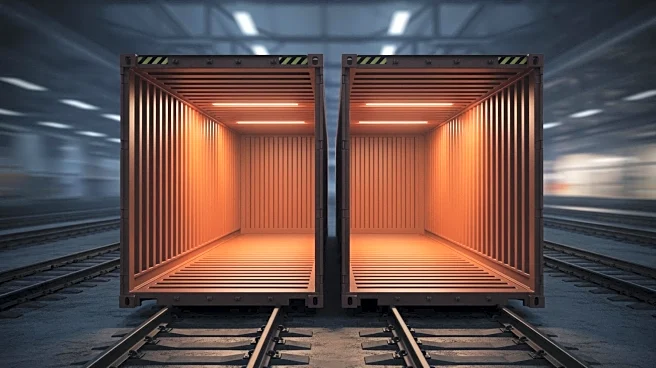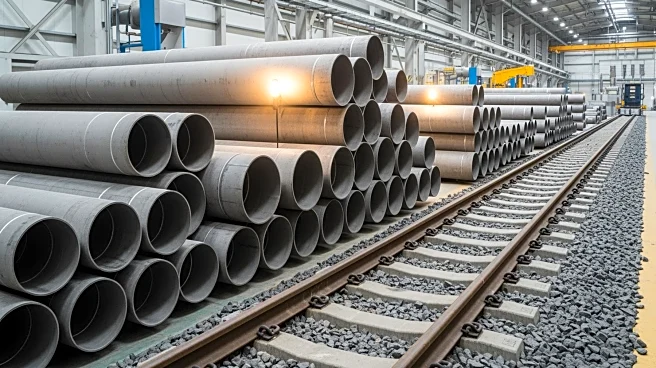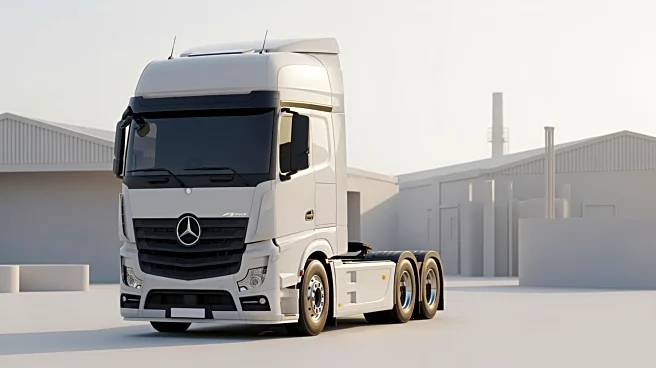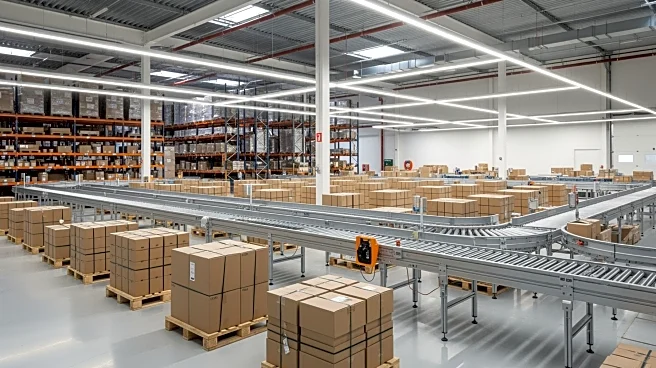What's Happening?
The Association of American Railroads (AAR) has reported a decline in U.S. rail carload and intermodal volumes for the week ending November 1. Rail carloads totaled 227,209, marking a 0.7% decrease compared to the previous year. Despite this decline,
certain commodity groups such as grain, metallic ores and metals, and miscellaneous carloads experienced annual gains. Conversely, coal, motor vehicles and parts, and nonmetallic minerals saw significant decreases. Intermodal containers and trailers also fell by 6.4% annually, with 269,719 units recorded. Over the first 44 weeks of 2025, rail carloads have increased by 1.9% annually, while intermodal units have risen by 2.8%.
Why It's Important?
The decline in rail volumes is significant as it reflects broader trends in the U.S. logistics and transportation sectors. Rail transport is a critical component of the supply chain, affecting various industries including agriculture, manufacturing, and retail. The decrease in intermodal units, which are essential for efficient transportation of goods, could signal potential disruptions in supply chain operations. Industries reliant on coal and automotive parts may face challenges due to reduced rail transport capacity. Conversely, the increase in grain and metallic ores transport suggests resilience in these sectors, potentially benefiting agricultural and mining industries.
What's Next?
Stakeholders in the logistics and transportation sectors may need to adapt to these changes by optimizing their supply chain strategies. Companies might explore alternative transportation methods or invest in technology to enhance efficiency. The ongoing fluctuations in rail volumes could prompt discussions among industry leaders and policymakers regarding infrastructure investments and regulatory adjustments to support the rail industry. Monitoring these trends will be crucial for businesses to mitigate risks and capitalize on emerging opportunities.
Beyond the Headlines
The decline in rail volumes may have deeper implications for environmental and economic policies. Reduced coal transport aligns with efforts to transition to cleaner energy sources, potentially influencing energy policy and investment in renewable resources. Additionally, the logistics sector's adaptation to these changes could drive innovation in transportation technology, fostering advancements in sustainable practices and efficiency.













